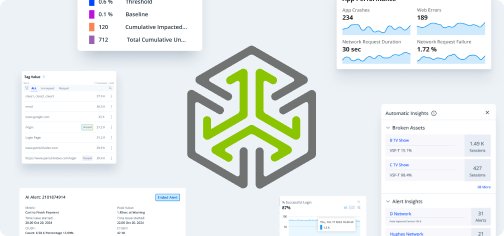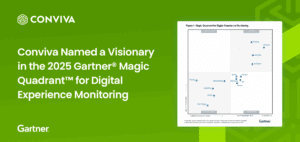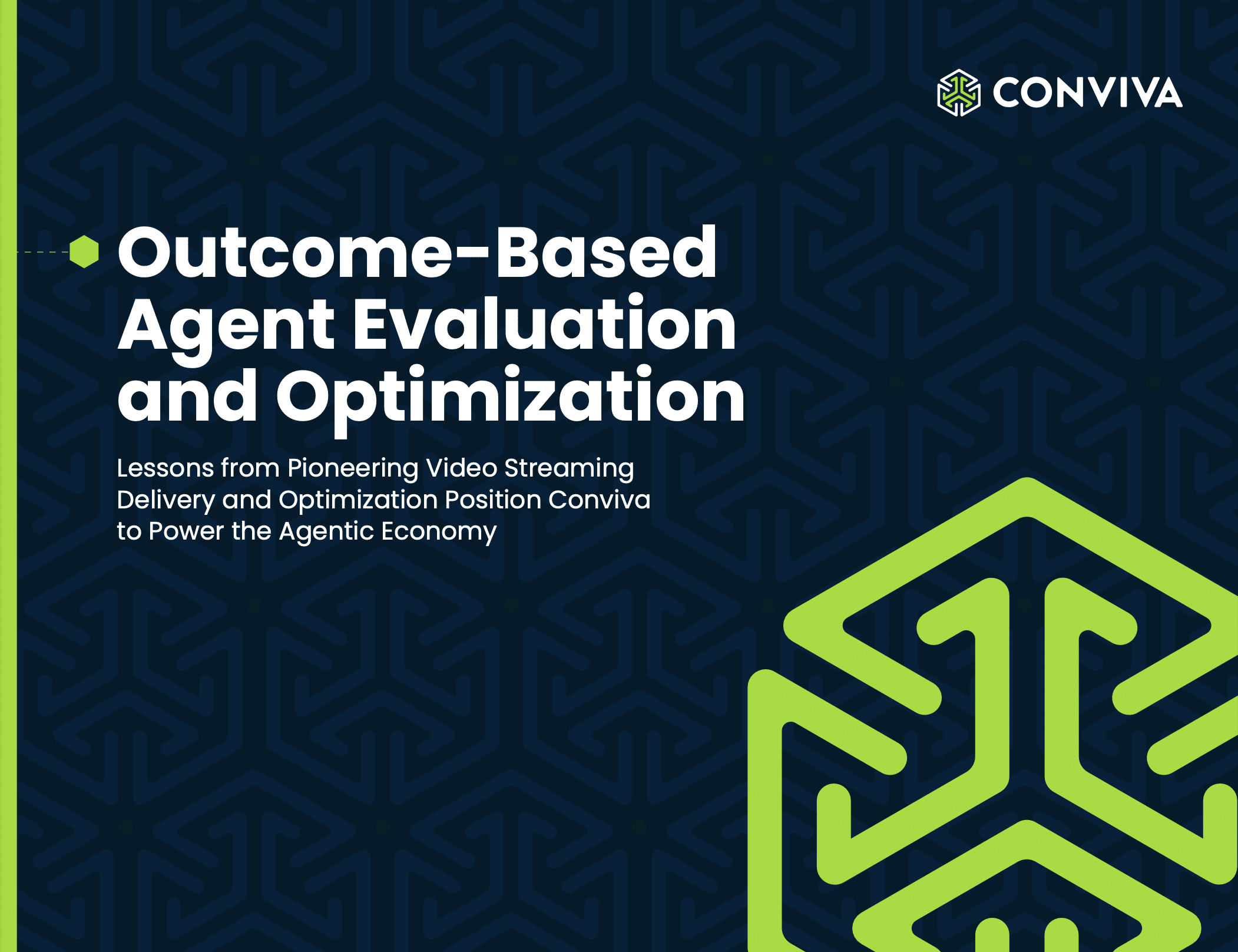Digital Experience Monitoring (DEM) is a comprehensive performance monitoring approach that tracks, analyzes, and optimizes end-user experiences across digital applications, websites, and services. DEM solutions combine three core methodologies: real-user monitoring (RUM), synthetic monitoring, and application performance data to provide complete visibility into how users perceive and interact with digital services.
DEM addresses the critical gap between traditional IT infrastructure monitoring—which focuses on backend systems—and customer-facing performance metrics that directly impact business outcomes and revenue.
Why Digital Experience Monitoring Matters
In 2025, DEM addresses three critical business challenges:
Escalating User Expectations
- Users demand sub-second loading times
- Personalization must happen in real time
- Reliability expectations approach 99.9% uptime
Complex Technology Architecture
- Multi-cloud environments spanning multiple vendors
- Extensive API ecosystems with third-party dependencies
- AI-driven services requiring continuous performance validation
Outcome-Focused Performance Requirements
- Conversion rate optimization directly tied to performance
- Customer retention metrics linked to experience quality
- Engagement measurement requiring holistic visibility
However, traditional DEM solutions face limitations: they typically rely on sampled data, provide post-event analysis rather than real-time insights, and create siloed perspectives. These constraints create blind spots, particularly as organizations implement agentic AI, large-scale streaming, and real-time personalization systems that require continuous, full-fidelity measurement across every user session.
Digital Experience Monitoring Tools and Components
Modern DEM platforms integrate four essential monitoring capabilities:
Real User Monitoring (RUM)
Real User Monitoring captures actual performance data directly from end users’ browsers, mobile devices, and applications. RUM provides authentic user experience metrics including page load times, interaction delays, and error rates as experienced by real customers.
Synthetic Monitoring
Synthetic monitoring uses automated, scripted transactions to simulate user interactions and continuously test application availability. This proactive approach identifies performance issues before they impact real users by testing critical user journeys from multiple geographic locations.
Session Replay Technology
Session replay functionality allows teams to visualize and analyze specific user journeys to diagnose friction points and conversion barriers. This capability provides visual context for quantitative performance data, enabling teams to understand not just what happened, but how users experienced performance issues.
Experience Metrics and KPIs
DEM platforms track comprehensive experience metrics including latency measurements, error rates, load times, and user engagement signals. These metrics provide the foundation for understanding how technical performance translates to business outcomes.
DEM vs. Outcome-Based Performance Analytics
Traditional DEM tools provide valuable monitoring capabilities but often struggle to connect experience, engagement, and system performance to business outcomes in real-time.
Limitations of Traditional DEM
- Sampled data collection that misses long-tail behaviors and edge cases
- Siloed insights that fail to integrate product analytics with observability data
- Delayed visibility due to batch processing instead of real-time analysis
- Scalability constraints when handling billions of sessions without data loss
Modern Outcome-Based Performance Analytics Advantages
Next-generation performance analytics platforms address these limitations by:
Unifying Data Streams: Combining behavioral analytics, user engagement metrics, and technical telemetry into a single, unsampled dataset that provides complete visibility.
Delivering Instant Insights: Eliminating delays and blind spots through real-time analytics that enable immediate action on performance issues and opportunities.
Identifying Growth Opportunities: Surfacing underperforming and overperforming customer cohorts using high-dimensional analytics that reveal micro-level user segments.
Connecting to Revenue Impact: Measuring not only what performance events occurred, but how long they lasted, why they mattered, and their direct impact on business outcomes.
Digital Experience Monitoring Benefits and Use Cases
Rapid Issue Detection: Synthetic and RUM monitoring enable quick identification of performance degradations.
Root Cause Analysis: Correlation between user experience metrics and system health accelerates problem diagnosis.
Customer Satisfaction Improvement: Reduced downtime and latency directly improve user satisfaction scores.
Investment Prioritization: Data-driven decision making for technology investments based on user impact.
Use Cases with Outcome-Based Analytics
Conversion Rate Optimization (CRO): Continuous analysis of user flows and conversion milestones to identify optimization opportunities.
Real-Time Friction Detection: Reduced mean time to detection (MTTD) to under 60 seconds for critical user journey issues.
Retention and Revenue Growth: Pattern recognition that uncovers revenue opportunities traditional DEM approaches miss.
Personalization Optimization: Real-time performance validation of AI-driven personalization systems.
Key Challenges and Limitations of Traditional DEM
Despite significant value, traditional DEM approaches face several critical limitations:
Data Quality and Coverage Issues
- Sampling limitations result in missed long-tail user behaviors and edge cases
- Incomplete session coverage creates blind spots in user journey analysis
- Geographic and device bias in monitoring coverage
Integration and Analysis Challenges
- Siloed tool ecosystems prevent holistic analysis across product, performance, and business metrics
- Limited cross-functional visibility between engineering, product, and business teams
- Delayed insight delivery due to batch processing architectures
Scalability and Modern Architecture Constraints
- Insufficient scalability for organizations operating at internet scale with billions of sessions
- Limited AI integration for modern agentic AI ecosystems and intelligent applications
- Inadequate real-time capabilities for streaming platforms and live services
These limitations make traditional DEM insufficient for organizations operating modern, AI-driven digital experiences that require real-time optimization and complete session visibility.
The Future of Digital Experience Monitoring
The evolution of DEM is shifting toward real-time, outcome-based performance analytics that prioritize business impact over purely technical metrics.
Emerging Requirements for 2025 and Beyond
Organizations will increasingly demand monitoring solutions that provide:
- Complete Session Telemetry: Full-fidelity client-side data collection from 100% of user sessions without sampling
- High-Dimensional Analytics: Advanced segmentation capabilities that reveal micro-level user cohorts and behavioral patterns
- Automated Intelligence: AI-powered anomaly detection and root-cause analysis prioritized by business impact rather than just technical severity
- AI Service Integration: Native monitoring and optimization capabilities for agentic AI applications and intelligent services
Technology Integration Trends
- Unified observability platforms that combine infrastructure, application, and experience monitoring
- Real-time streaming analytics replacing batch-based processing for immediate insights
- AI-powered optimization that automatically adjusts performance based on user behavior patterns
- Cross-platform measurement spanning web, mobile, IoT, and emerging interaction models
Related Technologies and Concepts
Digital Experience Monitoring intersects with several complementary technologies and methodologies:
Real User Monitoring (RUM): Client-side performance measurement from actual user sessions
Application Performance Monitoring (APM): Server-side application and infrastructure performance tracking
Synthetic Monitoring: Proactive testing using automated user journey simulation
Observability: Comprehensive system understanding through metrics, logs, and traces
Agentic Performance Analytics: Specialized monitoring for AI agent interactions and outcomes
Outcome Performance Analytics: Business-focused performance measurement connecting technical metrics to revenue impact
Getting Started with Digital Experience Monitoring
Assessment and Planning Phase
For organizations evaluating DEM solutions or considering platform modernization:
- Current State Analysis: Assess existing DEM infrastructure and identify gaps between technical monitoring and business outcome measurement
- Outcome Definition: Clearly define key business outcomes (conversion rates, customer retention, user engagement) that should be connected to experience and performance metrics
- Coverage Evaluation: Determine current telemetry coverage and identify blind spots in user journey monitoring
Implementation Strategy
Successful DEM implementation requires:
- Comprehensive Telemetry Expansion: Ensure monitoring visibility across 100% of user sessions rather than relying on sampled subsets
- Stateful Analytics Adoption: Implement analytics capabilities that measure not only what performance events occurred, but how long they lasted and their business impact
- Real-Time Insight Prioritization: Focus on platforms that enable immediate action on performance issues and optimization opportunities as they occur
Integration and Optimization
- Cross-functional alignment between engineering, product, and business teams on performance priorities
- Automated alerting systems that prioritize notifications based on business impact rather than just technical thresholds
- Continuous optimization processes that use performance insights to drive product and infrastructure improvements
Getting Started with Conviva
Conviva helps the world’s top brands to identify and act on growth opportunities across AI agents, mobile and web apps, and video streaming services. Our unified platform delivers real-time performance analytics and AI-powered insights to transform every customer interaction into actionable insight, connecting experience, engagement, and technical performance to business outcomes. By analyzing client-side session data from all users as it happens, Conviva reveals not just what happened, but how long it lasted and why it mattered—surfacing behavioral and experience patterns that give teams the context to retain more customers, resolve issues faster, and grow revenue.
To learn more about how Conviva can help improve the performance of your digital services, visit www.conviva.com, our blog, and follow us on LinkedIn. Curious to learn how you can identify and resolve hidden conversion issues and discover five times more opportunities for growth? Let us show you. Sign up for a demo today.





